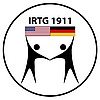B10 (2019 - 2022) - The role of the complosome in T cell memory
Maintenance of T cell homeostasis is critical for normal functioning of the immune system. Transient disruption of homeostasis occurs when naïve T cells undergo antigen-driven expansion and acquire effector functions. Following execution of their effector function, some of these expanded effector T cells die, while some persist as memory T cells. The differentiation and persistence of memory T cells is crucial: it resets T cell homeostasis, promotes protective immunity, and limits autoimmunity.However, the mechanism(s) underlying this cell-fate decision remain largely undefined.
Recent work in the Kemper lab has shown an unexpected role for intracellular complement (the complosome) in acquisition of Th1 cell fate. Indeed, stimulation of T cells via CD3 and CD46 antibodies leads to increased levels of C5a which signals intracellularly through C5aR1 to promote Th1 development (Arbore et al Science2016). Further, C5aR1-deficient T cells have a decreased lifespan, implicating C5a in promotion of T cell survival (Strainic et al Nat Immunol.2008). Similar to C5, intracellular C3 promotes steady-state mTOR activation and survival of T cells (Liszewski et al Immunity2013) – see Summary Figure 2. However, the roles of C3 and C5a in maintenance of lineage stability, survival, and development of T cell memory remains unclear. The Hildeman lab has shown that the pro-apoptotic molecule Bim plays a dominant role in promoting the death of activated T cells during immune responses in vivo(Hildeman et al Immunity2002; Wojciechowski et al J. Exp Med.2007; Tripathi et al, Cell Death & Diff.2013; Kurtulus et al Cell Death & Diff.2015). In addition, the lab has recently begun exploring the role of Bcl2 family members in survival of subsets of CD4+T helper cells. Their published and preliminary data show that Bim is critical to suppress the age-driven accumulation of FoxP3+Treg cells (Chougnet et al J. Immunol.2011) and IL-10-producing Tfh cells (manuscript in preparation). Although complement also appears to promote IL-10 production from Th1 cells during the down-sizing of the immune response, the intersection between complement signaling pathways and apoptosis signaling pathways during T cell responses remains unclear.
Aims:
1. To determine the cell-intrinsic role of C3 on memory T cell survival and function
2. To determine the cell-intrinsic role of C5 on memory T cell survival and function
3. To determine the degree to which the additional loss of Bim can restore T cell survival and function in the absence of C3/C5.
Principal Investigators


Students




